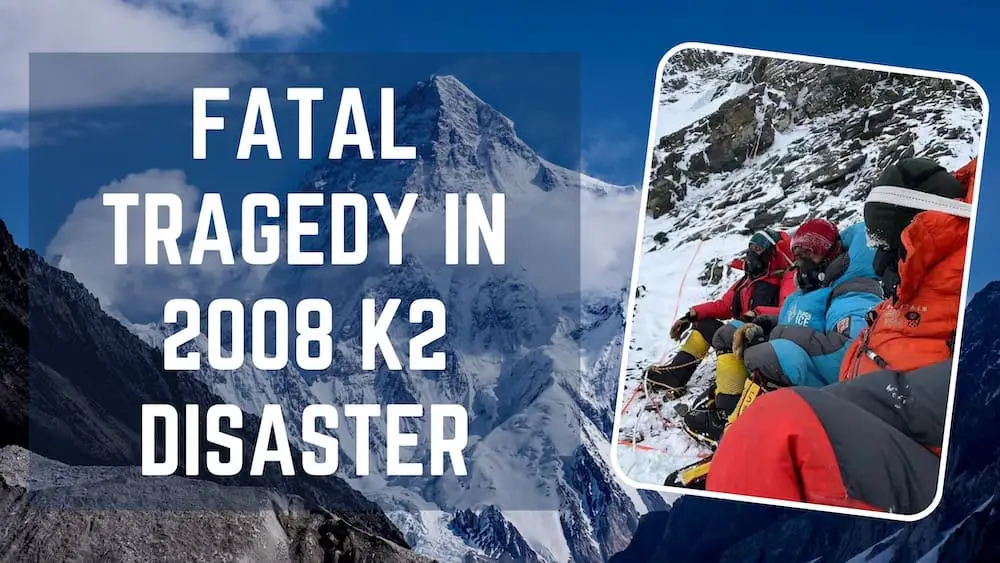On 1st August 2008, 11 mountaineers lost their lives in the K2 disaster, with three others sustaining serious injuries. This event marked the deadliest single accident in K2 mountaineering history. The specific details surrounding the tragedy, including climbers’ actions and timing, remain partly uncertain. This is due to varying eyewitness accounts and radio communications from climbers who perished on that fateful day.
The primary issue was an ice avalanche at ‘the Bottleneck,’ destroying vital rope lines for climbers. Additionally, two climbers lost their lives before the avalanche while ascending to the summit. The victims were from France, Ireland, South Korea, Nepal, Norway, Pakistan, and Serbia. Due to inadequate planning, poor communication, and unfavorable weather led to the death of 11 climbers in a single day. Here’s everything you need to know about 2008 K2 Disaster.
Quick Facts on 2008 K2 Disaster
- On August 1, 2008, a team of 25 mountain climbers set out to conquer the K2 peak.
- K2, situated on the Pakistan-China border, is renowned as a highly perilous mountain.
- The expedition faced challenges from the outset, such as a delayed commencement and inadequate climbing equipment.
- Tragically, within a 24-hour timeframe, 11 climbers representing 7 different countries lost their lives during the ascent.
In 2008, K2 Base Camp Attracted Nearly 200 Climbers
Professional climbers consider K2 as being far more challenging than Mount Everest. K2 is regarded as one of the world’s toughest climbs and has claimed the lives of around 80 climbers. And barely 300 people have attempted to climb K2, compared to over 4,000 who have climbed Everest.
Everest has had its fair share of deaths as well, read more about it: Death on Everest: What happens to the bodies?
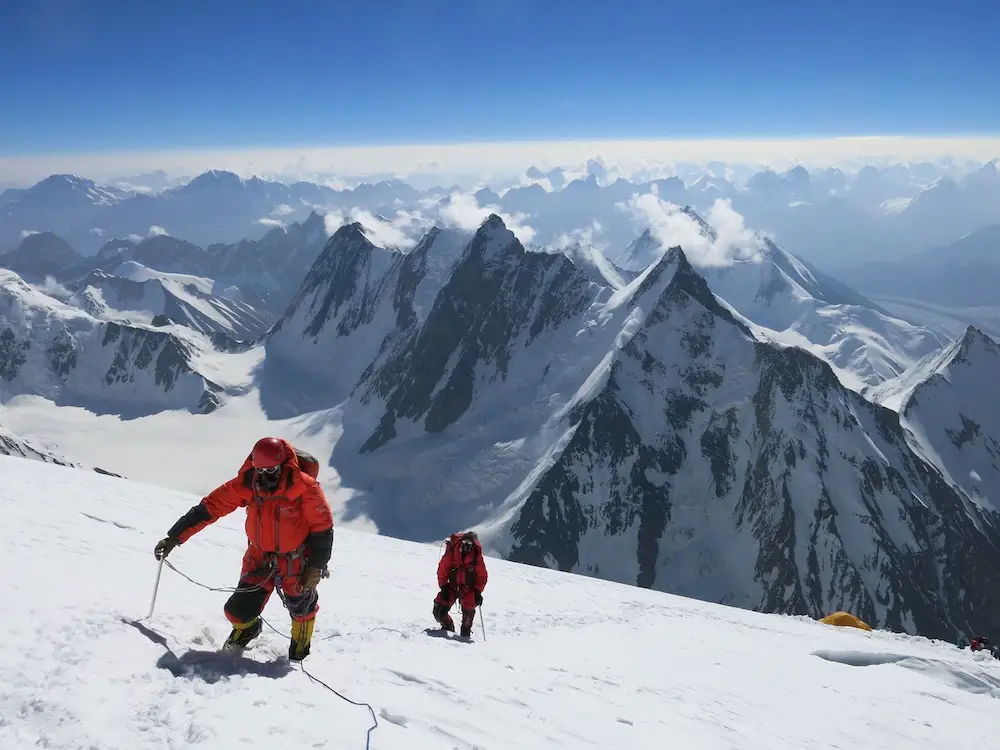
Nearly 200 climbers from around the world descended on K2’s base camp in 2008 to attempt the ascent. Each party planned to ascend in turn to avoid congestion on the path, spacing out their ascents. The best months to climb K2 are typically June through August. Climbing is impossible in all but the warmest temperatures due to extreme weather.
As July neared its end and weather forecasts showed improvement, multiple mountaineering groups converged at Camp IV on July 31. They geared up to attempt the summit once favorable weather conditions arrived. The collaborative effort involved an American team, a French team, a Norwegian team, a Serbian team, a South Korean team, all accompanied by Sherpas from Nepal.
Additionally, an international team supported by the Dutch company Norit and Pakistani high-altitude porters (HAPs) joined the ascent on August 1. In parallel, a few independent climbers, including a solo Spaniard and an Italian pair, also set out for the summit in the morning.
1 August 2008: Detailed Events of the K2 Summit Day
Prior to midnight, High-Altitude Porters (HAPs) and Sherpas initiated the setup of fixed lines. They were later joined by Alberto Zerain, a Spanish solo climber. Notably, the most experienced HAP, Shaheen Baig, had to descend due to symptoms of high altitude sickness, leaving a leadership void given his prior successful K2 summit and unofficial leadership role among the HAPs and Sherpas.
Subsequently, some confusion arose regarding rope placement, potentially resulting in ropes being left behind or situated too far down the slope from the Bottleneck. The climbing groups began their ascent at 3:00 a.m. They discovered that the HAPs and Sherpas had initially placed lines above Camp IV, extending into the Bottleneck. However, they ran out of rope for the traverse just above the Bottleneck. As a result, climbers had to repurpose lower portion ropes for the critical lines above the Bottleneck. This caused an unplanned and delays in the climbing schedule.
Given the circumstances, Eric Meyer and Fredrik Sträng from the American group made the decision to abort the ascent and return to Camp IV. Due to the increasing likelihood of reaching the summit late and the substantial ice fall exposure in the congested Bottleneck. Chris Klinke continued for a few more hours before also deciding to abandon the ascent. Jelle Staleman from the Norit team also followed his footsteps as his feet were starting to get frozen.
A Serbian and French Climber Fell To Their Death
At 8:00 a.m., climbers began navigating the Bottleneck. Dren Mandić, from the Serbian team, unclipped himself from the fixed rope to tend to his oxygen system and pass Cecilie Skog from the Norwegian team. During this maneuver, he lost his balance and fell, colliding with Skog. She remained secured to the rope and was knocked over. However, Mandić plummeted over 100 meters (328 feet) down the Bottleneck.
At Camp IV, some climbers reported observing signs of movement after Mandić’s fall, prompting a rescue effort. Fredrik Sträng, a Swedish climber, took charge of the recovery operation. Assessing the severity of Mandić’s injuries and finding no pulse, they determined him to be deceased. The Serbian team decided to lower the body down to Camp IV, with Sträng assisting. Jehan Baig, a HAP from the French team, also joined the effort. However, he displayed questionable behavior, potentially due to high altitude sickness. Unfortunately, during the descent, Baig lost his footing and fell to his death after inadvertently releasing the rope attached to Mandić’s harness.
Delays were exacerbated by a bottleneck of climbers, significantly postponing numerous summit attempts. Some climbers reached the summit as late as 8:00 p.m., well beyond the typical summitting window of 3:00 to 5:00 p.m. A total of 18 individuals successfully summited that day, but eight (plus one who halted near the summit) did not survive the extended descent. Alberto Zerain, a Spanish climber, managed to navigate the Bottleneck without issues during the descent after being the first to reach the summit alone at 3:00 p.m.
Tragic Nightfall on K2: The Bottleneck Descent
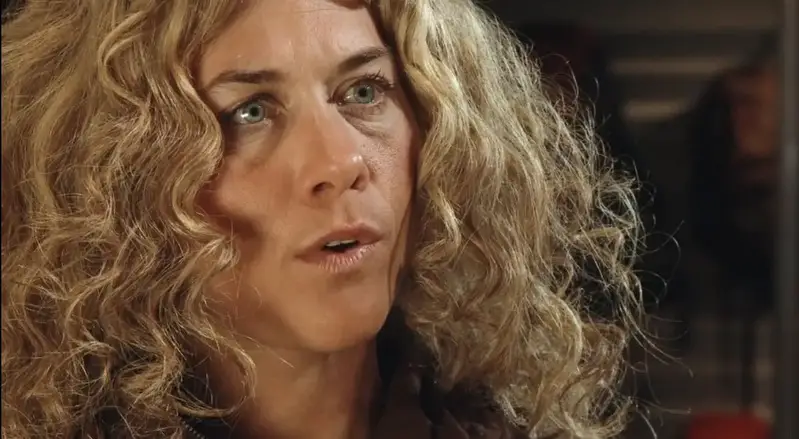
At 8:30 p.m., K2 was shrouded in darkness. Members of the Norwegian group, including Lars Flatø Nessa and Skog had successfully reached the summit two hours before Zerain. As they ere nearing the traverse leading to the Bottleneck, a serac dislodged from above.
The falling serac severed all fixed lines and tragically swept away Rolf Bae, Skog’s husband, who had halted his ascent just 100 meters (330 feet) below the summit. He had instructed Nessa to care for his wife as he waited for her. Nessa and Skog proceeded their descent without the aid of the now-missing fixed lines and managed to reach Camp IV during the night.
The serac’s fall altered the descent route through the Bottleneck, making it more technically challenging. Ice chunks were strewn along the path, and climbers above were stranded in darkness within the death zone above 8,000 meters (26,000 feet). Since the climbers had initially relied on the fixed lines, they lacked extra ropes or fall protection devices, compelling them to ‘free solo’ the descent through the infamous Bottleneck. Wilco van Rooijen, a Dutch mountaineer, recounted a sense of panic among climbers waiting above the Bottleneck. Some attempted a descent in the darkness, while others opted to bivouac and wait until morning before making their descent.
Norit Team and South Korean Expedition at the Bottleneck
In the challenging conditions of the K2 Bottleneck, the Norit team had an experienced climber named Pemba Gyalje Sherpa, who had prior Mount Everest support climbing experience. Gyalje undertook a daring descent in darkness without relying on fixed ropes, successfully reaching Camp IV before midnight. Simultaneously, Sherpa Chhiring Dorje securely harnessed ‘Little’ Pasang Lama, who had been stranded without an ice axe, and descended the Bottleneck. This remarkable feat required precise coordination, as described by Ed Viesturs in ‘K2: Life and Death on the World’s Most Dangerous Mountain.’
Two members of the South Korean expedition, Kim Jae-soo and Go Mi-Young, successfully descended the challenging Bottleneck in darkness. Notably, Go Mi-Young received aid from two Sherpas of the Korean B team, Chhiring Bhote and ‘Big’ Pasang Bhote. They ascended around midnight, lacking food and oxygen, and found Go Mi-Young stranded, unsure of her route.
Bottleneck Descent Challenges and Bivouac on K2
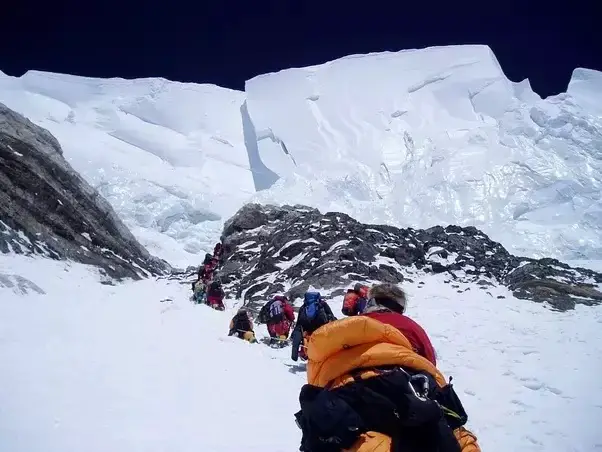
Cas van de Gevel from Norit’s team and the French team’s Hugues D’Aubarède made the decision to navigate the Bottleneck in the dark. Van de Gevel, upon reaching the bottom of the Bottleneck, tragically witnessed a fellow climber’s fatal fall.
Sherpas Chhiring Bhote and ‘Big’ Pasang Bhote also confirmed this and witnessed objects falling from the mountain. They strongly believe that the fallen climber was D’Aubarède. Van de Gevel had encountered him just above the Bottleneck in the dark. D’Aubarède had depleted his bottled oxygen hours before and appeared fatigued when van de Gevel passed him, urging van de Gevel to descend ahead of him.
Meanwhile, Italian semi-soloist Marco Confortola and Norit teammates van Rooijen and Irishman Ger McDonnell were forced to bivouac above the traverse. They had been unable to locate the fixed ropes guiding them across. Confortola recounted hearing screams and witnessing headlights vanish beneath him after a deafening roar emanated from the serac field during their bivouac. At this juncture, eight individuals remained positioned above the Bottleneck.
2 August 2008
The rescue efforts began from the base camp, involving a dedicated team tasked with ascending to aid those still trapped in the Bottleneck. This team included Sherpas Tsering Bhote and ‘Big’ Pasang Bhote, recognized for their previous assistance in guiding Go Mi-Young down the Bottleneck section. Their current mission expanded to searching for their relative, Jumik Bhote, among the climbers of the Korean expedition who remained stranded above the Bottleneck.
Rescue Efforts and Stranded Climbers on K2
Van Rooijen abandoned the search for the fixed ropes due to deteriorating vision and a fear of snow blindness. This prompted him to prioritize a swift descent from the mountain. Confortola and McDonnell did not immediately follow van Rooijen’s descent. Later, van Rooijen met the remaining Korean climbers, including Kyeong-Hyo Park, and their guide Jumik Bhote.
The climbers, tangled in multiple ropes, some hanging upside down and bloodied, miraculously remained alive. The circumstances leading to their entangled state—whether a second serac fall, avalanche, or a regular fall—remain unclear. Varying reports mention either two or three remaining Koreans, with potential severe injuries to one. This event might have aligned with what Confortola witnessed during the previous night’s bivouac. Or alternatively, it could have been the second object seen falling by Tsering Bhote and ‘Big’ Pasang Bhote, but concrete evidence is limited. Van Rooijen offered Jumik Bhote his spare gloves but couldn’t provide further assistance. Jumik Bhote informed him of an ongoing rescue mission from Camp IV, leading van Rooijen to proceed with his descent.

The Rescue Efforts on K2: Contrasting Accounts and Actions
Confortola and McDonnell eventually reached the stranded Korean group later in the morning and dedicated hours to their rescue efforts. The exact subsequent events are uncertain. According to Confortola, after collaborating for 1.5 hours, McDonnell unexpectedly climbed back up the mountain, leaving him with the three trapped men. Confortola assumed McDonnell had succumbed to high-altitude sickness, believing he needed to climb back up.
Alone with the men, Confortola did his best for Jumik Bhote, providing his own equipment. Despite the challenges, they managed to reposition the Koreans into a more comfortable stance, although still entangled. Confortola was able to contact Tsering Bhote and ‘Big’ Pasang Bhote, who were en route to the rescue. Exhausted from spending at least three hours with the entangled group, Confortola decided to continue his descent.
Van Rooijen contested Confortola’s account of events. Van Rooijen, having witnessed Confortola and McDonnell aiding the stranded Koreans and their guide from below, believed McDonnell did not climb back up the mountain. But ascended to the highest anchor supporting the entangled men, potentially attempting a load transfer. McDonnell might have returned to aid the men, potentially spending additional hours assisting in their release from the ropes. In his book ‘Surviving K2,’ van Rooijen shows photographs he believes to support this claim.
Third Serac Fall and Tragic Avalanche
Confortola noticed an avalanche striking just feet away from him sometime after he left the three men. In the rubble, he identified the remains of one climber, later concluded to be McDonnell.
Around noon, Tsering Bhote and ‘Big’ Pasang Bhote reached the base of the Bottleneck. They found Confortola crawling on his hands and knees. The two Sherpas radioed Gyalje and van de Gevel to ascend and assist Confortola, enabling Tsering Bhote and ‘Big’ Pasang Bhote to continue the search for their relative, Jumik Bhote, and the Koreans. ‘Big’ Pasang Bhote later radioed Gyalje that he had met Jumik Bhote and two members of the Korean expedition just above the Bottleneck—apparently they were freed after all.
He radioed about a fourth climber, in a red-and-black suit, descending with the Koreans and Sherpas. He has been swept away by a serac fall and confirmed deceased. The description matches McDonnell’s, suggesting Confortola’s misidentification of remains in the avalanche, supporting van Rooijen’s theory. Tsering Bhote, at the Bottleneck base, witnessed a serac fall hitting the descending rescue party near the top.
Unresolved Mystery of Meherban Karim’s Disappearance
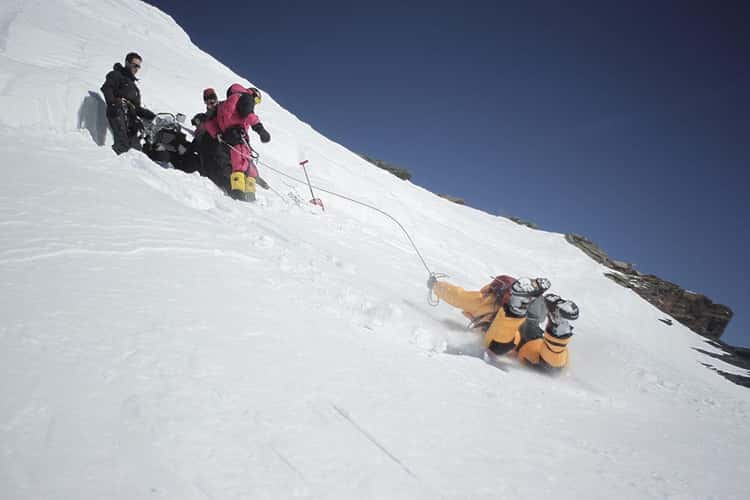
Here, another mystery of the 2008 K2 disaster adds confusion to the sequence of events:
- One climber remained unaccounted for: D’Aubarède’s HAP, Meherban Karim.
- Van de Gevel witnessed D’Aubarède above the Bottleneck, suggesting that he and D’Aubarède likely got separated in the dark.
- Karim last saw them as he returned from the summit with D’Aubarède in the later hours of 1 August.
- Van Rooijen, in his book Surviving K2, supports the theory that Karim bivouacked even higher on the mountain than himself, Confortola, and McDonnell.
Conflicting Accounts and Plausible Scenarios
Graham Bowley, in his book No Way Down (2010), remains unable to refute van Rooijen’s evidence regarding Karim’s fate. Confortola’s statements, although conflicting and later disproven, were initially influential due to media coverage. Notably, Marco Confortola had identified the remains believed to be McDonnell’s but were later contested. The uncertainty surrounding eyewitness accounts underscores the complexity of the tragic events on K2 that day. In Buried in the Sky (2012), Padoan and Zuckerman closely examine the Sherpa and HAP experiences, presenting alternative scenarios, including the possibility of McDonnell and Karim still being alive during the fourth serac fall.
Avalanche Strikes and Increases Death Toll
Shortly after “Big” Pasang Bhote’s radio update confirming the finding of Jumik Bhote and two Korean climbers, another avalanche or serac fall occurred, sweeping away the four men. Tsering Bhote, slower in his ascent, survived the avalanche, along with Gyalje and Confortola at the base of the Bottleneck. The tragic death toll now stood at 11.
Van Rooijen’s Harrowing Descent and Survival
Simultaneously, van Rooijen was navigating a solo descent down the mountain, taking an alternate route to bypass Camp IV via the left of the Česen route. Learning that van Rooijen was still on the mountain, van de Gevel and Gyalje descended from Camp IV to Camp III. Van Rooijen, enduring the challenges, managed to use a satellite phone for communication, aiding in locating his position. He endured a second bivouac, resulting in severe frostbite to his feet, becoming one of the few to survive two days above the perilous 8000m “Death Zone”.
Successful Rescue Operations Amidst The 2008 K2 Disaster

Van de Gevel and Gyalje successfully located van Rooijen on the Česen route early in the morning of August 3, 2008. The trio managed a treacherous descent to the base camp, reaching it by 10:00 p.m.
1. Pakistani Military Launches Rescue Efforts
Initiating a rescue operation on August 4, 2008, the Pakistani military deployed two helicopters. They evacuated the two injured and frostbitten Dutch climbers from the base camp, situated at an altitude of approximately 5,000 meters (16,400 feet) above sea level, to Skardu. Van Rooijen’s location was pinpointed using GPS coordinates transmitted by his Thuraya satellite phone during a call to his brother.
2. Confortola’s Journey to Safety
Confortola descended to Camp II, the advance base camp, and was airlifted by helicopter the subsequent day. The Pakistani authorities released a list of names documenting those who had lost their lives or sustained injuries.
3. Additional Rescue Efforts for Descending Climbers
In the wake of the disaster, four climbers, including an Italian, were making their way down the mountain independently. Subsequently, they were flown to Skardu for necessary medical treatment.
List of Fatalities
A list of 11 climbers who lost their lives during the 2008 K2 Disaster:
| Name | Nationality | Location of Death | Cause of Death |
|---|---|---|---|
| Dren Mandić | Serbia | Below the Bottleneck | Fell during the ascent |
| Jehan Baig | Pakistani | Below the Bottleneck | Fell while trying to recover Dren Mandić’s corpse |
| Rolf Bae | Norwegian | Bottleneck | The first serac fall |
| Hugues D’Aubarède | French | Above the Bottleneck | Fell during the his descent at night |
| Karim Meherban | Pakistani | Above the Bottleneck | Either the second serac fall or the third serac fall |
| Gerard McDonnell | Irish | Above the Bottleneck | Hit by either the second or third serac fall, after |
| Kyeong-Hyo Park | South Korean | Above the Bottleneck | The fourth serac fall |
| Hyo-Gyeong Kim | South Korean | ||
| Dong-Jin Hwang | South Korean | ||
| Jumik Bhote | Nepali | ||
| Pasang Bhote | Nepali |
During the tragic incident that initially entangled the ropes, one of the three Koreans lost their life. It remains unclear whether this occurred during the fall or the subsequent morning before the others were rescued. Various sources present conflicting information regarding the number of Koreans caught in the tangled ropes. Some accounts suggest three Koreans, while McDonnell and Confortola attempted their rescue. Conversely, other sources state two Koreans and Jumik Bhote. However, it is confirmed that only two Koreans were still alive and encountered Pasang Bhote before the final serac fall.
Post-K2 Endeavors and Recognitions
In the aftermath of the K2 tragedy, several individuals associated with the expedition went on to make significant contributions and receive notable recognitions:
- Marco Confortola penned a book in Italian titled “Days of Ice,” chronicling his experiences and challenges on K2.
- In memory of Gerard McDonnell, his family established a charity aimed at sponsoring the children of four High-Altitude Porters (HAPs) who lost their lives on K2.
- “Buried in the Sky” (2012) vividly portrayed the intersecting lives of Chhiring Dorje Sherpa and “Little” Pasang Lama. The book received prestigious awards such as the National Outdoor Book Award (history/biography) and the NCTE George Orwell Award in 2012. In March 2013, Chhiring Dorje Sherpa received the Tenzing Norgay Award at the Explorers Club Annual Banquet in honor of his remarkable heroism.
- The 2008 National Geographic Adventure Adventurer of the Year award recognized Pemba Gyalje Sherpa for his extreme heroism amidst challenging circumstances.
- Ed Viesturs, a prominent figure from the expedition, published the book “K2: Life and Death on the World’s Most Dangerous Mountain” (2009) and engaged in various media projects concerning the K2 experience.
- Wilco van Rooijen authored a book in both Dutch and English titled “Surviving K2,” providing insights into his survival and experiences during the tragic expedition.
- Cecilie Skog contributed to the narrative with her book in Norwegian, titled “Til Rolf,” shedding light on her perspective and experiences during the K2 expedition.
Could The 2008 K2 Disaster Have Been Avoided?
Other climbers also observed that some teams did not fulfill their promises despite splitting responsibilities. Various groups either failed to fix ropes or bring supplies to Camp 4. The deals they made failed, endangering lives.
Many people questioned how they could have abandoned so many of their fellow climbers on the treacherous slopes of K2. The climbers, amidst growing criticism, posed a question: if you faced such a daunting task and knew it meant risking your life, what would you do?
The Himalayas are no stranger to disasters. If you are curious about another incident high in the mountains, then make sure to check out my blog on the Annapurna Circuit Disaster: How 43 Climbers Died.
FAQs: 2008 K2 Disaster
Below are the most frequently asked questions about the 2008 K2 Disaster:
Eleven people died in K2 after an ice avalanche destroyed a fixed rope climbers used to reach the summit and oxygen deprivation. Inadequate planning and communication from the beginning contributed to the climbers’ tragedy.
11 men died in the 2002 K2 disaster: Hugues d’Aubarède from France, Ger McDonnell from Ireland, Dren Mandic from Serbia, Rolf Bae from Norway, Jimc Bhote and Pasang Bhote from Nepal, Jehan Baig and Karim Meherban from Pakistan, Park Kyeong, Hwang Dong, and Park Hyo from Korea.
While the Everest peak holds greater elevation, the mountaineering community considers K2 a significantly more challenging and perilous ascent due to its harsher weather and steeper gradients.
